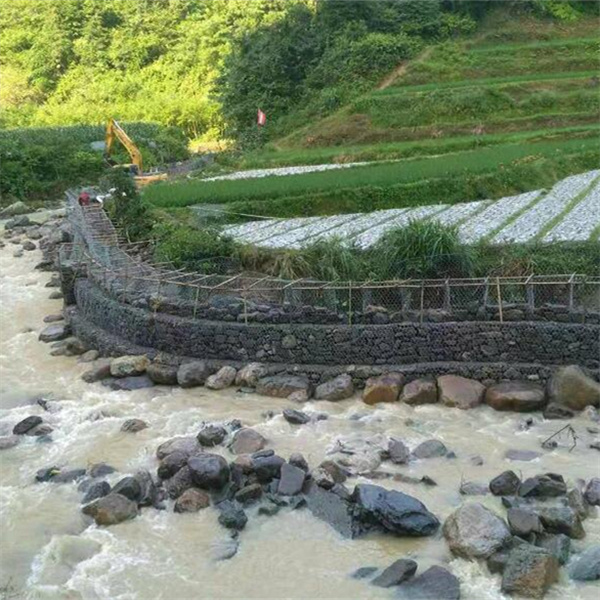Dec . 29, 2024 01:56 Back to list
Creative DIY Ideas for Building a Stunning Gabion Wall at Home
Building the Best Homemade Gabion Wall
Gabion walls have been a favored choice in landscape design for many years, lauded for their durability, aesthetic appeal, and functionality. A gabion wall is essentially a structure made from cages filled with stones or other materials, creating a robust barrier that can be used for various purposes, from erosion control to decorative features in gardens. If you’re looking to build the best homemade gabion wall, this guide will lead you through the essential steps, materials, and creative ideas to make your project a success.
Understanding Gabion Walls
Before you dive into building your gabion wall, it's crucial to grasp what makes these structures so effective. Gabions are designed to perform well under various environmental pressures. The wire mesh cages contain rocks, gravel, or other materials, allowing water to flow through while still holding back soil or creating a supportive structure. This permeability reduces pressure on the wall during heavy rain or flooding, making gabions an excellent choice for areas prone to erosion.
Planning Your Gabion Wall
1. Selecting the Location Choose a location that needs stabilization or can benefit from the aesthetic appeal of a gabion wall. It can be used as a retaining wall, garden border, or even a decorative feature in your outdoor space.
2. Design and Size Determine the dimensions of your wall. Consider how high and wide you want it to be. Typical heights for gabion walls range from 3 to 6 feet. Keep in mind that taller walls may require engineering considerations to ensure stability.
3. Materials Required - Wire Mesh Baskets These are the forms that will hold your stones. They can be bought pre-made or constructed on-site using galvanized steel wire to ensure rust resistance. - Filling Material Sourcing durable materials is key. Common choices include granite, limestone, or river stones. Select a size that fits well within the mesh; typically, rocks are around 4-8 inches in diameter. - Tools You’ll need gloves, wire cutters, pliers, and possibly a shovel or wheelbarrow, depending on your site conditions.
Step-by-Step Construction
best homemade gabion wall

1. Prepare the Base Start by clearing the ground where the wall will be built. Ensure it is level and compact to provide a solid foundation. You may also consider placing a geotextile fabric to prevent weeds from growing through the stones.
2. Build Your Gabion Cages If you’re making your own cages, cut the wire mesh into pieces and use pliers to create rectangular or square boxes. Make sure to securely attach edges with additional wire.
3. Assemble the Gabion Wall Position the first cage on the prepared base and fill it with stones. Begin from one end and pack the stones tightly to offer stability. Construct additional cages in the same manner, stacking them as you go. Use smaller stones to fill in gaps and ensure the finishes are neat.
4. Finishing Touches Once you’ve completed stacking the gabions, you can cover the tops with soil and plant vegetation, or leave the stones exposed for a natural look. Select plants that thrive in your local climate for the best results.
Maintenance and Longevity
The beauty of gabion walls is their low maintenance needs. Over time, moss and vines may grow around your wall, adding to its charm. However, it’s good practice to check the integrity of the wire mesh periodically and ensure that no stones have shifted out of place.
Conclusion
A homemade gabion wall can be an excellent addition to any outdoor space, providing both functional and aesthetic benefits. With careful planning and execution, you can create a sturdy, attractive structure that will stand the test of time. Whether you’re building to prevent erosion, for privacy, or simply as a stylish element in your garden, a gabion wall is a project worth undertaking. Embrace your creativity, gather your materials, and enjoy the satisfaction of constructing a lasting feature for your home!
-
hesco-gabion-baskets-for-coastal-erosion-prevention
NewsAug.22,2025
-
longevity-and-durability-of-river-rock-gabion-walls
NewsAug.22,2025
-
how-to-integrate-gabion-3d-walls-in-urban-planning
NewsAug.22,2025
-
reno-mattress-gabion-applications-in-civil-engineering
NewsAug.22,2025
-
how-to-install-wire-mesh-for-gabion-baskets-properly
NewsAug.22,2025
-
best-materials-for-filling-a-chain-link-gabion
NewsAug.22,2025
-
Wire Mesh Thickness Impact on Gabion Wall Load Bearing
NewsAug.12,2025






